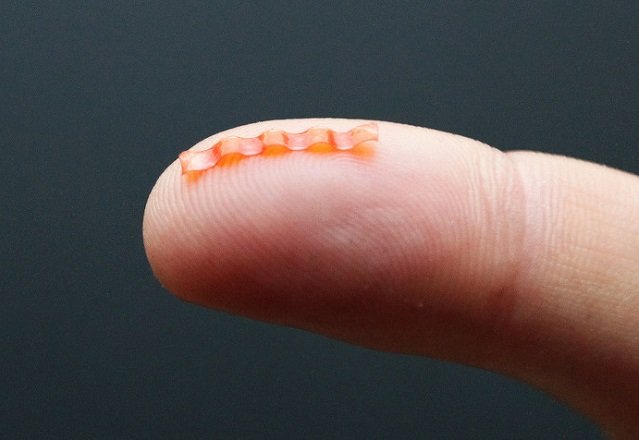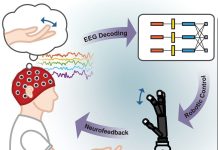
In a recent study, researchers from the University of Warsaw in Poland develop a light-driven soft robot that mimics caterpillar movements in nature. The finding is published in Advanced Optical Materials.
Researchers used a liquid crystal elastomer technology originally developed in the LENS Institute in Florence, Italy. Liquid crystal elastomers are rubbery networks composed of long, crosslinked polymer chains.
The 15-mm long micro-robot can harvest energy from green light and is controlled by laser beam. It can travel on flat surface, climb slopes, squeeze through narrow slits and transport loads.
The light-driven caterpillar robot is different from previous bio-inspired robots because it has no skeletons and joints. Most of robots designed to mimic natural locomotion have skeletons and joins to support their movements, but in nature many creatures travel with their soft bodies.
These animals, including snails, earthworms, and larval insects, and move in different environments by using their bodies differently.
Another advantage of the light-driven caterpillar robot is its small size. Previous soft robots are usually large (tens of centimeters) due to remote control and power management issues.
This micro-robot, on the other hand, addresses these issues. It uses liquid crystal elastomers that can change shape under illumination with visible light. Currently, it is possible to pattern the smart materials into arbitrary 3-D forms that can perform complex actions.
Researchers suggest that this robot design opens up new areas of soft robotics in micro- and millimeter-length scales, including swimmers and even fliers.
Citation: Rogóż M, et al. (2016). Light-Driven Soft Robot Mimics Caterpillar Locomotion in Natural Scale. Advanced Optical Materials, published online. doi: 10.1002/adom.201600503.
Figure legend: This Knowridge.com image is credited to Rogóż M et al.



